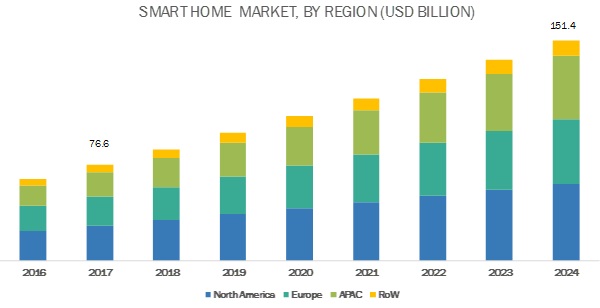MarketsandMarketsTM research report "Construction Robot Market by Type (Traditional, Robotic Arm, and Exoskeleton), Automation, Function, Application (Public Infrastructure, Commercial and Residential Buildings, Nuclear Dismantling and Demolition), and Geography - Global Forecast to 2023", the construction robot market is valued at USD 76.6 Million in 2018 and is expected to reach USD 166.4 Million by 2023, at a CAGR of 16.8% between 2018 and 2023. The market is mainly driven by the factors such as enhanced productivity, quality, and safety due to the implementation of construction robots and growing urbanization worldwide.
World’s Largest Robotics Conference to take place in Canada for First Time
20 May 2019 - 24 May 2019 • Montreal, QC, Canada
ICRA, the world’s largest robotics conference, is set to be held in Canada for the first time, offering insights into the future of robotics across the globe. ICRA, short for International Conference on Robotics and Automation, is organised by the IEEE, the world’s largest engineering association. Specifically, the IEEE Robotics & Automation Society. With global spending on robotics systems and drones forecast to total $115.7 billion this year alone – an increase of 17.6 percent over 2018 – the world’s largest robotics conference is scheduled to get under way in Montreal later this month, unveiling the latest and greatest in robotics research and innovations from 71 countries under one roof. Flagship conference of the robotics and automation society, a premiere international venue for international robotics researchers KNOW MORE
20 May 2019 - 24 May 2019 • Montreal, QC, Canada
ICRA, the world’s largest robotics conference, is set to be held in Canada for the first time, offering insights into the future of robotics across the globe. ICRA, short for International Conference on Robotics and Automation, is organised by the IEEE, the world’s largest engineering association. Specifically, the IEEE Robotics & Automation Society. With global spending on robotics systems and drones forecast to total $115.7 billion this year alone – an increase of 17.6 percent over 2018 – the world’s largest robotics conference is scheduled to get under way in Montreal later this month, unveiling the latest and greatest in robotics research and innovations from 71 countries under one roof. Flagship conference of the robotics and automation society, a premiere international venue for international robotics researchers KNOW MORE
- Download Informational PDF Brochure :- https://www.marketsandmarkets.com/pdfdownloadNew.asp?id=266557111
- Construction robot market for exoskeleton to grow at highest CAGR during forecast period
- Semi-autonomous construction robots held larger share of overall market in 2017
- Europe is major consumer of construction robots

Key players in the market are Brokk (Sweden), Husqvarna (Sweden), Ekso Bionics (US), Komatsu (Japan), Fujita (Japan), Construction Robotics (US), Fastbrick Robotics (Australia), Autonomous Solutions (US), Conjet (Sweden), TopTec Spezialmaschinen (Germany), Apis Cor (Russia), nLink (Norway), Yingchuang Building Technique Co. (WinSun) (China), Advanced Construction Robotics (US), MX3D (Netherlands), CyBe Construction (Netherlands), CYBERDYNE (Japan), Giant Hydraulic Tech (China), Alpine Sales and Rental (US), and Beijing Borui Intelligent Control Technology (China).
- Ask for Sample Pages of Report :- https://www.marketsandmarkets.com/requestsampleNew.asp?id=266557111
Browse 66 market data Tables and 32 Figures spread through 128 Pages and in-depth TOC on "Construction Robot Market - Global Forecast to 2023"
Robots Building Houses, Bricklaying Robot, Brick Robot Major Trending Application of Study insight.
About MarketsandMarkets
MarketsandMarkets™ is determined to benefit more than 10,000 companies this year for their revenue planning and help them take their innovations/disruptions early to the market by providing them research ahead of the curve.
Contact:
Mr. Shelly SinghMarketsandMarkets™ INC.
630 Dundee Road
Suite 430
Northbrook, IL 60062
USA : 1-888-600-6441
newsletter@marketsandmarkets.com
630 Dundee Road
Suite 430
Northbrook, IL 60062
USA : 1-888-600-6441
newsletter@marketsandmarkets.com




